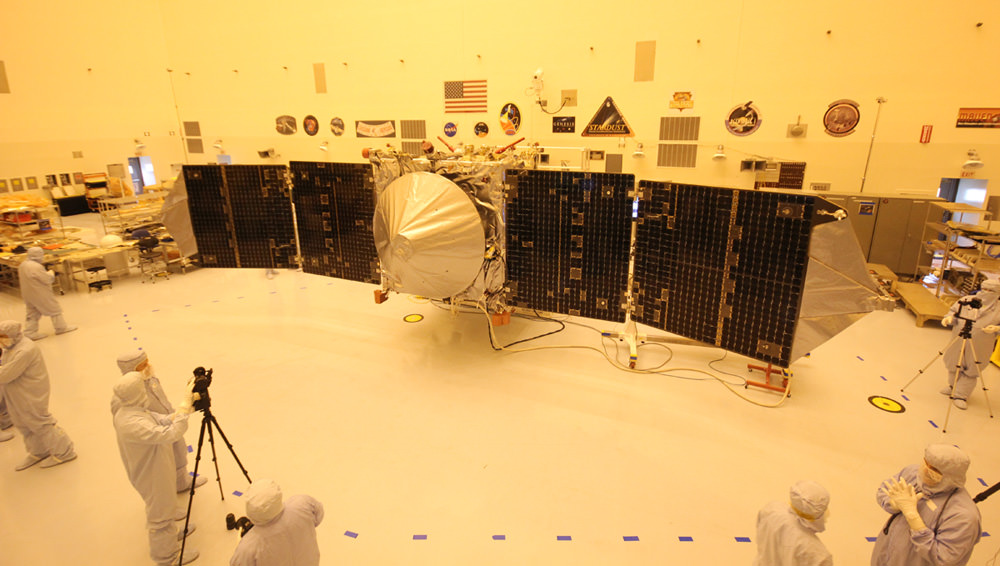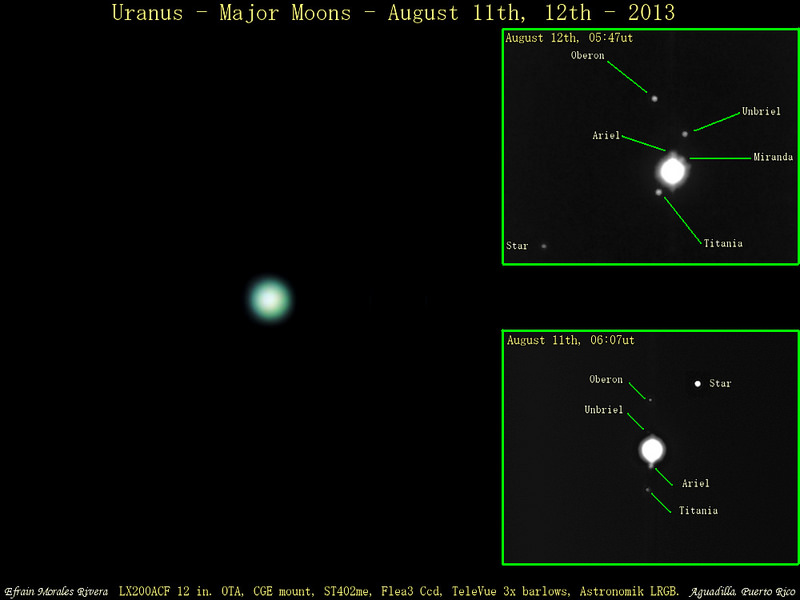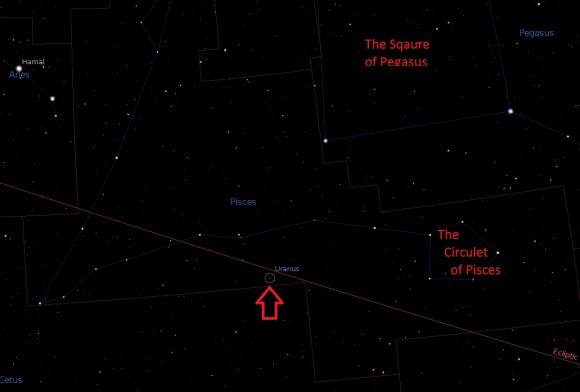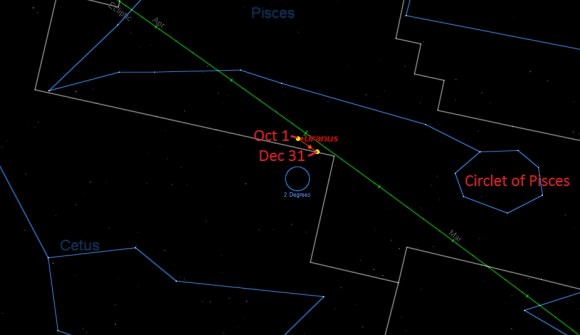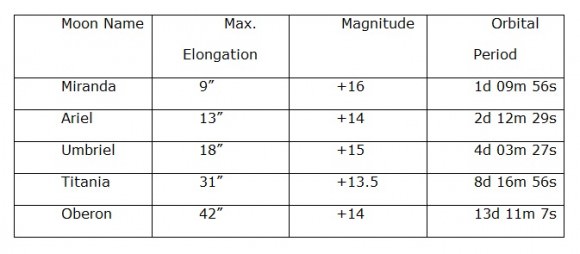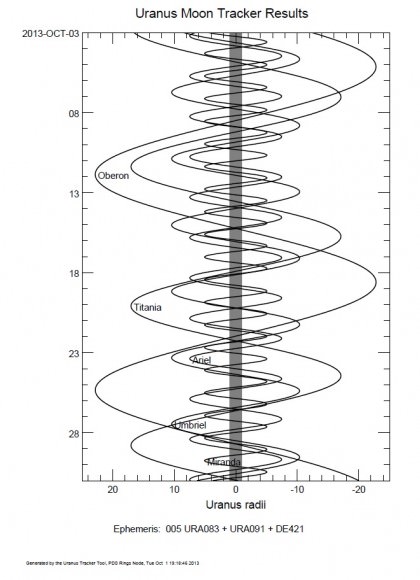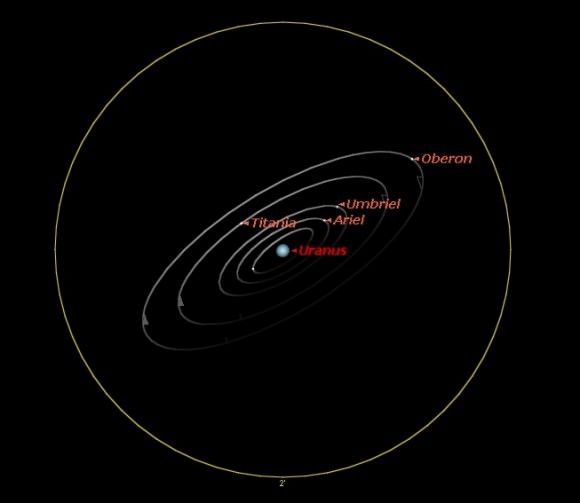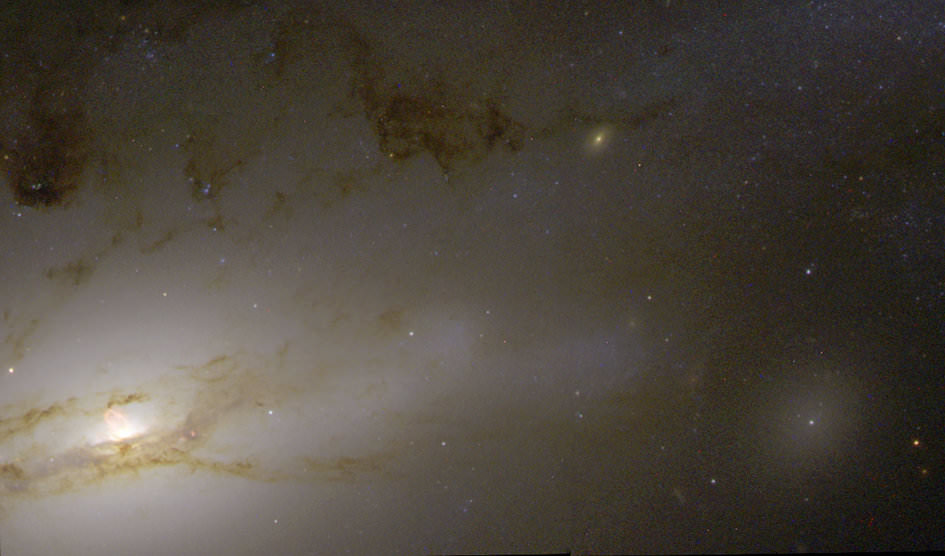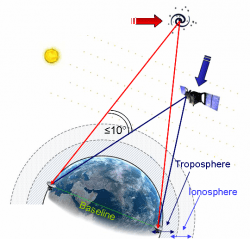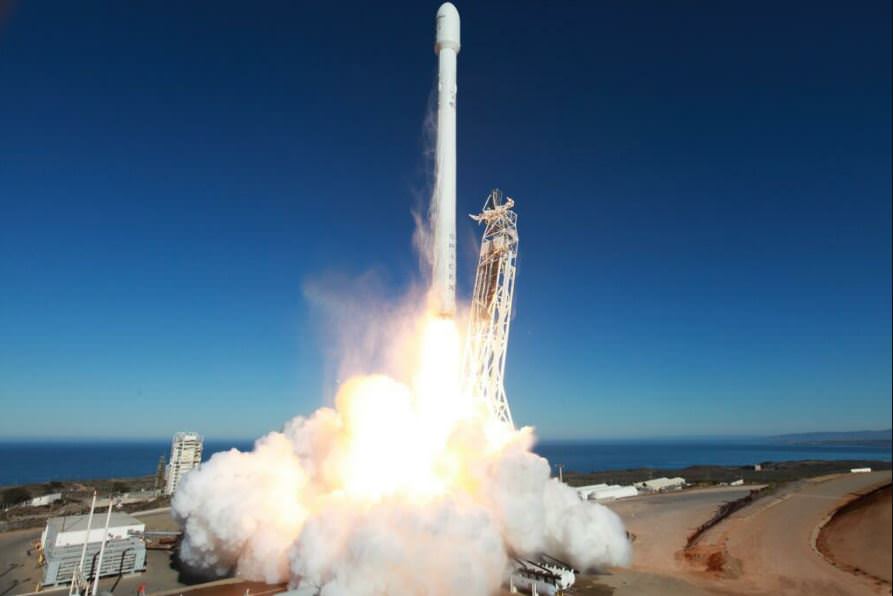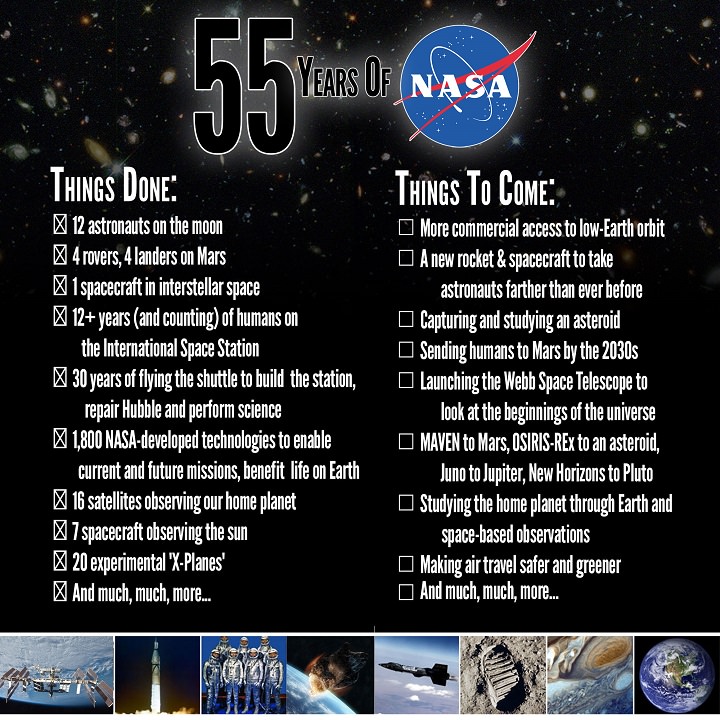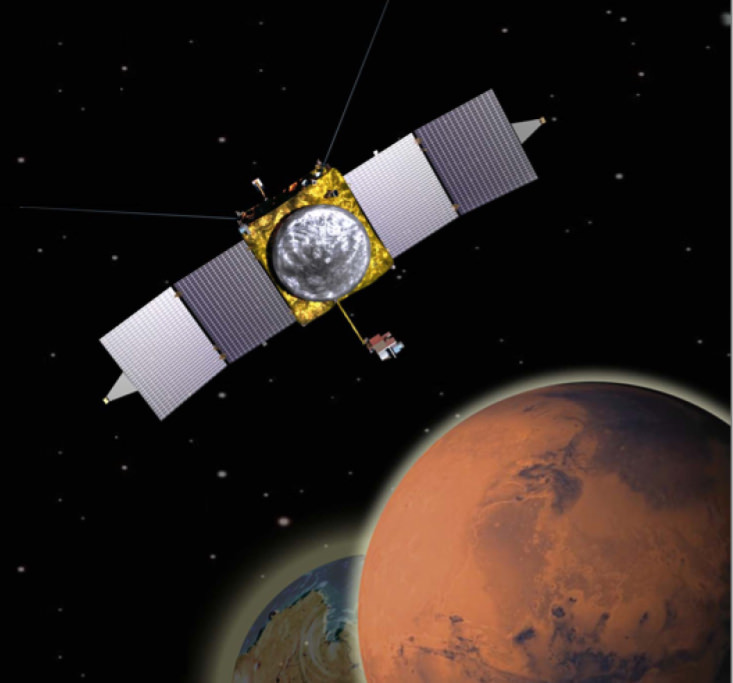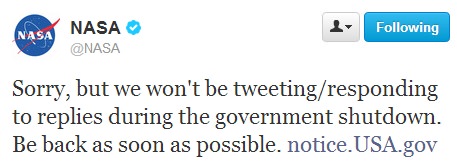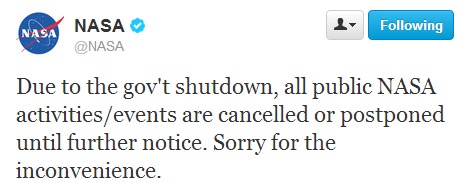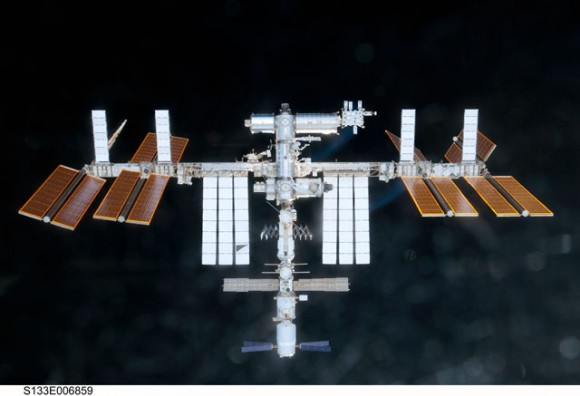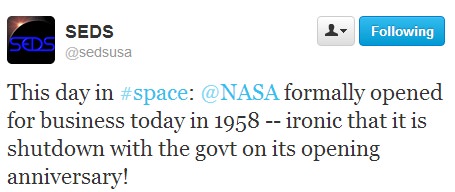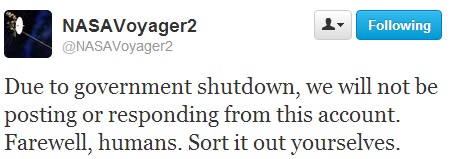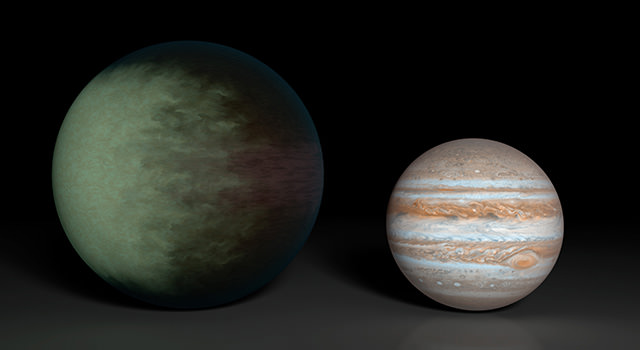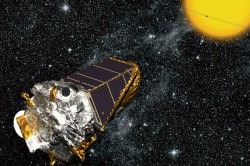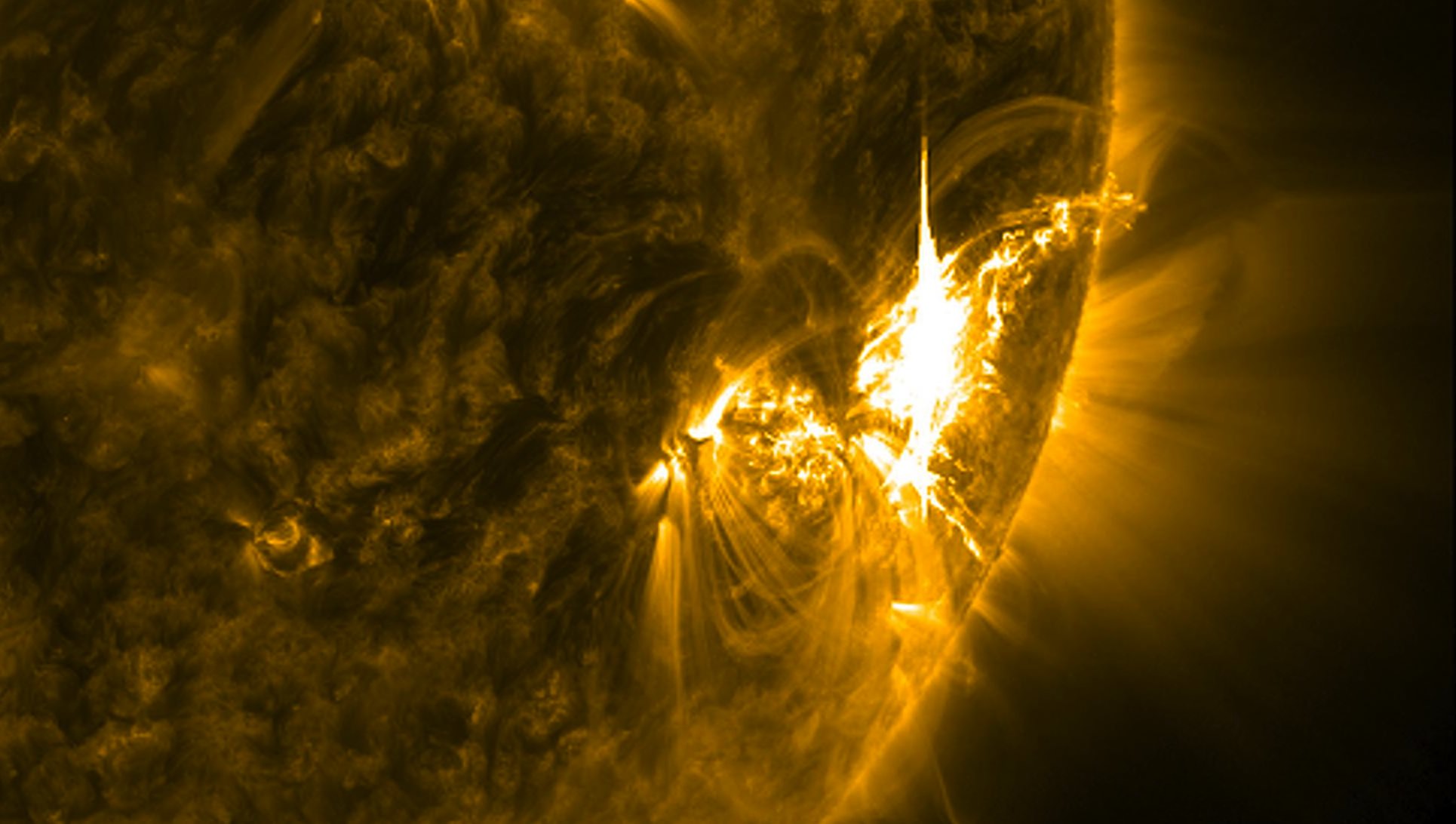The upcoming Nov. 18 blastoff of NASA’s new MAVEN Mars orbiter is threatened by today’s US Federal Government shutdown. Launch processing work has now ceased! Spacecraft preps had been in full swing when MAVEN was unveiled to the media, including Universe Today, inside the clean room at the Kennedy Space Center on Sept. 27, 2013. With solar panels unfurled, this is exactly how MAVEN looks when flying through interplanetary space and orbiting Mars.
Credit: Ken Kremer/kenkremer.com[/caption]
KENNEDY SPACE CENTER, FL – The upcoming Nov. 18 blastoff of NASA’s next mission to Mars – the “breathtakingly beautiful” MAVEN orbiter – is threatened by today’s (Oct. 1) shutdown of the US Federal Government. And the team is very “concerned”, although not yet “panicked.”
MAVEN’s on time launch is endangered by the endless political infighting in Washington DC. And the bitter gridlock could cost taxpayers tens of millions of dollars or more on this mission alone!
Why? Because launch preparations at NASA’s Kennedy Space Center (KSC) have ceased today when workers were ordered to stay home, said the missions top scientist in an exclusive to Universe Today.
“MAVEN is shut down right now!” Prof. Bruce Jakosky, MAVEN’s principal Investigator, of the University of Colorado at Boulder, told Universe Today in an exclusive post shutdown update today.
“Which means that civil servants and work at government facilities [including KSC] have been undergoing an orderly shutdown,” Jakosky told me.
The nominal interplanetary launch window for NASA’s $650 Million MAVEN (Mars Atmosphere and Volatile EvolutioN Mission) mission to study the Red Planet’s upper atmosphere only extends about three weeks until Dec. 7.
If MAVEN misses the window of opportunity this year, liftoff atop the Atlas V rocket would have to be postponed until early 2016 because the Earth and Mars only align favorably for launches every 26 months.
Any launch delay could potentially add upwards of tens to hundreds of millions of dollars in unbudgeted costs to maintain the spacecraft and rocket – and that’s money that NASA absolutely does not have in these fiscally austere times.
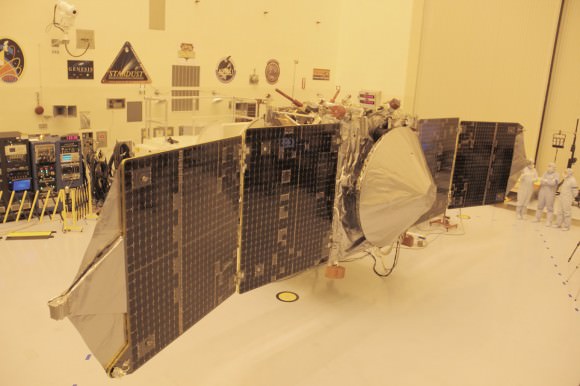
MAVEN and much of NASA are not considered “essential” – despite having responsibility for hundreds of ongoing mission operations costing tens of billions of dollars that benefit society here on Earth. So about 97% of NASA employees were furloughed today.
What’s happening with the spacecraft right now?
“The hardware is being safed, meaning that it will be put into a known, stable, and safe state,” Jakosky elaborated.
Team members say there are about nine days of margin built into the processing schedule, which still includes fueling the spacecraft.
“We’ll turn back on when told that we can. We have some margin days built into our schedule,” Jakosky told me.
“We’re just inside of 7 weeks to launch, and every day is precious, so we’re certainly as anxious as possible to get back to work as quickly as possible.
And he said the team will do whatever necessary, including overtime, to launch MAVEN to the Red Planet by Dec. 7.
“The team is committed to getting to the launch pad at this opportunity, and is willing to work double shifts and seven days a week if necessary. That plus the existing margin gives us some flexibility. “
“That’s why I’m concerned but not yet panicked at this point.”
But a lengthy delay would by problematical.
“If we’re shut down for a week or more, the situation gets much more serious,” Jakosky stated.
Until today, all of the spacecraft and launch preparations had been in full swing and on target – since it arrived on Aug. 2 after a cross country flight from the Colorado assembly facility of prime contractor Lockheed Martin.
Indeed it was all smiles and thumbs up when I was privileged to personally inspect MAVEN inside the clean room at KSC a few days ago on Friday, Sept 27 during a media photo opportunity day held for fellow journalists.
Until now, “MAVEN was on schedule and under budget” said Jakosky in an interview as we stood a few feet from the nearly fully assembled spacecraft.
See my MAVEN clean room photos herein.
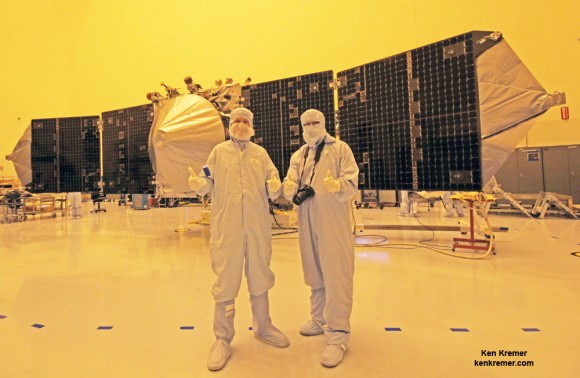
And in an ultra rare viewing opportunity, the solar panels were fully unfurled.
“The solar panels look exactly as they will be when MAVEN is flying in space and around Mars.”
“To be here with MAVEN is breathtaking,” Jakosky told me. “
“Its laid out in a way that was spectacular to see!”
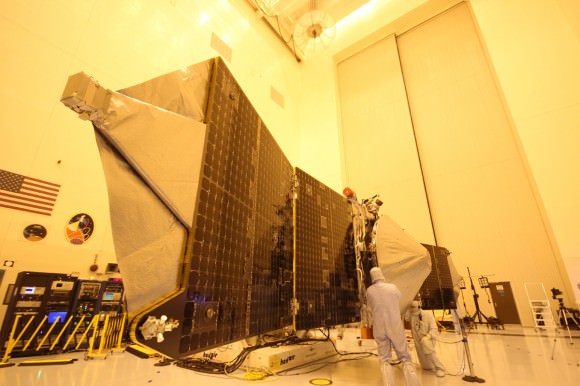
If absolutely necessary it might be possible to extend the launch window a little bit beyond Dec. 7, but its uncertain and would require precise new calculations of fuel margins.
“The nominal 20-day launch period doesn’t take into account the fact that our actual mass is less than the maximum allowable mass,” Jakosky explained.
“The last day we can launch has some uncertainty, because it also requires enough fuel to get into orbit before our mission would begin to be degraded.”
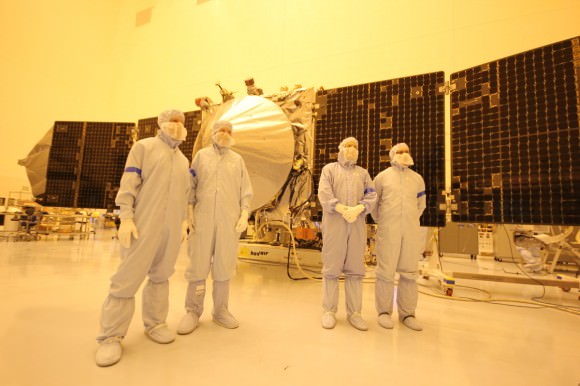
It sure was breathtaking for me and all the media to stand beside America’s next Mission to Mars. And to contemplate it’s never before attempted science purpose.
“MAVENS’s goal is determining the composition of the ancient Martian atmosphere and when it was lost, where did all the water go and how and when was it lost,” said Jakosky.
That’s the key to understanding when and for how long Mars was much more Earth-like compared to today’s desiccated Red Planet.
Following a 10 month interplanetary voyage, MAVEN would fire thrusters and brake into Mars orbit in September 2014, joining NASA’s Red Planet armada comprising Curiosity, Opportunity, Mars Odyssey and Mars Reconnaissance Orbiter.
Lets all hope and pray for a short government shutdown – but the outlook is not promising at this time.
Stay tuned.
…………….
Learn more about MAVEN, Curiosity, Mars rovers, Cygnus, Antares, SpaceX, Orion, LADEE, the Govt shutdown and more at Ken’s upcoming presentations
Oct 3: “Curiosity, MAVEN and the Search for Life on Mars – (3-D)”, STAR Astronomy Club, Brookdale Community College & Monmouth Museum, Lincroft, NJ, 8 PM
Oct 8: NASA’s Historic LADEE Lunar & Antares/Cygnus ISS Rocket Launches from Virginia”; Princeton University, Amateur Astronomers Assoc of Princeton (AAAP), Princeton, NJ, 8 PM

